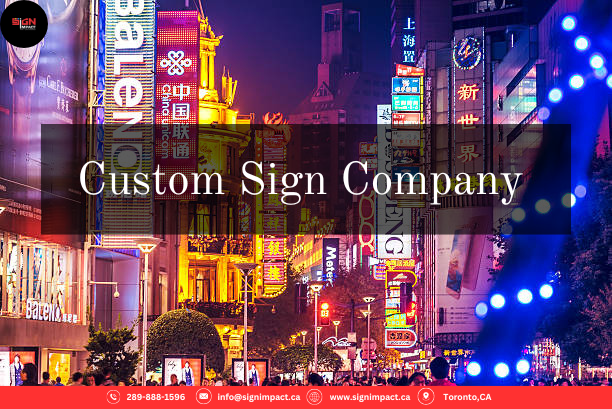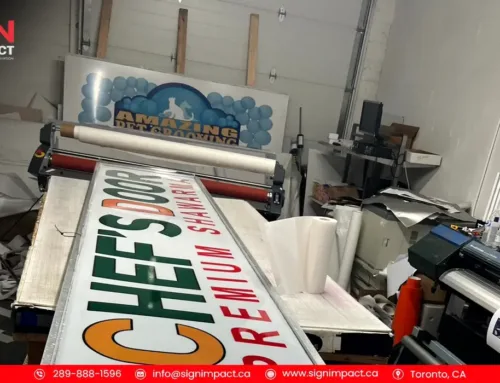Cultural attractions and historical landmarks have a particular position in our communities. We serve as windows into the past, facilitating our understanding of heritage, culture, and history. Clear and interesting signage is necessary, nevertheless, in order to completely engage visitors and guarantee that these locations continue to be accessible and pleasurable.
Here’s why having good signage at these famous locations is so important.
Enhancing Visitor Experience
An important part of improving the tourist experience is having signage that is both clear and educational. Tourists frequently arrive at historical sites or cultural locations knowing very little. We are led by well-designed signage that provide them the background information and context they need to understand the place. It adds interest and fulfillment to their experience.
Educating Diverse Audience
People from all walks of life, frequently from other nations and cultures, are drawn to historical and cultural landmarks. By filling in knowledge gaps and accommodating different linguistic demands, signage aids in the education of these varied audiences. Regardless of their language or educational background, users may better comprehend the site thanks to multilingual signage, visual aids, and unambiguous symbols.
At Signimpact, we create engaging, informative signage that brings history to life. As a trusted custom sign company, we design signs that guide and educate visitors, making every visit memorable. Choose Signimpact to elevate your site’s appeal and connect with your audience in a whole new way.
Preserving Historical Integrity
In order to maintain the integrity of historical places, signage is equally crucial. The site’s condition is preserved by signs that advise visitors on appropriate conduct, such as staying away from particular places or not touching artifacts. Visitors could inadvertently do harm or compromise the site’s historical authenticity in the absence of these visible indicators.
Assisting with Wayfinding
Effective navigation is made possible by clear signage, which aids visitors in navigating expansive or intricate locations. Many historical sites are large, and it may be difficult for tourists to make their way around them. Visitors are effectively guided by directional signs, maps, and designated trails, allowing them to explore the site without feeling overwhelmed or disoriented.
Highlight Key Feature
Not every area of a historical site is equally significant or well-known. Signage aids in drawing attention to particular aspects that are especially noteworthy or captivating. Signs in a medieval castle, for example, can highlight the original walls or antique artworks. By making sure they don’t overlook any important details, this advice enhances the visitor experience.
Making Learning Accessible and Fun
Signage has the power to make learning enjoyable and approachable. Visitors are given an immersive experience with interactive signage that include features like touchscreens, QR codes, or even augmented reality. Children in particular are kept more interested by interactive features, which transform a straightforward visit into an instructive journey.
Supporting Inclusive Access
People with varying capacities can more easily explore historical places because to clear signage. A site’s inclusion is improved by signs that use audio guides, braille for the blind, or accessible typefaces. It guarantees that everyone can benefit from the educational value of cultural landmarks, irrespective of their ability.
Strengthening Cultural Connection
Stronger ties between tourists and the culture or history we are learning about are facilitated by well-designed signage. Meaningful messaging and culturally appropriate information enhance the experience. A greater appreciation for the place and its history is fostered when visitors recognize the site’s cultural significance and relevance.
Reducing the Needs for Additional Staff
Efficient signage lessens the need for extra employees to direct or educate guests. Although guides can offer insightful information, strategically placed signage can convey important information without overpowering guests. It is especially helpful in tourist destinations where having individual guides for each visitor may not be feasible.
Promoting Awareness and Respect for Visitors
It’s common for visitors to have differing degrees of understanding about historical site preservation. Visitors are encouraged to be cautious of their conduct where there are clear signs explaining the regulations, such as those pertaining to photography limitations, off-limits places, or expectations for polite behaviour. Signage contributes to the preservation of important locations for coming generations by raising awareness.
Increasing the Economic Impact of Local Tourism
In addition to helping the landmark, interesting signage increases local visitors. Visitors are more inclined to refer the website to others when we have a good experience and gain knowledge. Increased tourism as a result of this word-of-mouth promotion might help the local economy, surrounding companies, and the preservation of the place in the future.
Making the Visitor Experience Memorable
A memorable tourist experience is facilitated by effective signage. Signs may convey a tale from the time a visitor enters a location until we depart, taking them step-by-step through the history and culture. Visitors are inspired to share their travels, images, and ideas with others by this narrative technique, which also makes the experience unforgettable.
Value of Preservation
It’s possible that many tourists are unaware of how crucial it is to preserve historical places. Signage that conveys information about conservation initiatives and the need of preservation may have a significant influence. It promotes a sense of shared responsibility by reminding visitors that our contribute to preserving the location for future generations.
Adopting Contemporary Technology for Upcoming Generations
By integrating contemporary technology into signs, such as interactive screens, augmented reality (AR), or smartphone applications, a link between the past and the future is established. In particular, younger generations are more likely to interact with experiences improved by technology. By adding digital elements, history education may become more engaging for a contemporary audience.
Finally
Cultural places and historical landmarks are priceless assets, and maintaining their appreciation and preservation depends heavily on signage. These places are transformed from static sites into immersive experiences by means of clear, interesting, and educational signage that informs, guides, and inspires visitors. By investing in meaningful signage, these beloved locations may continue to educate and inspire future generations.




